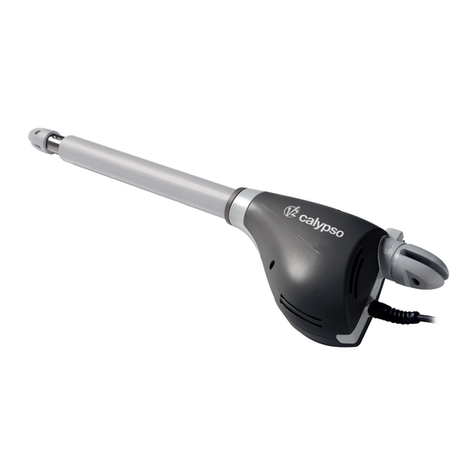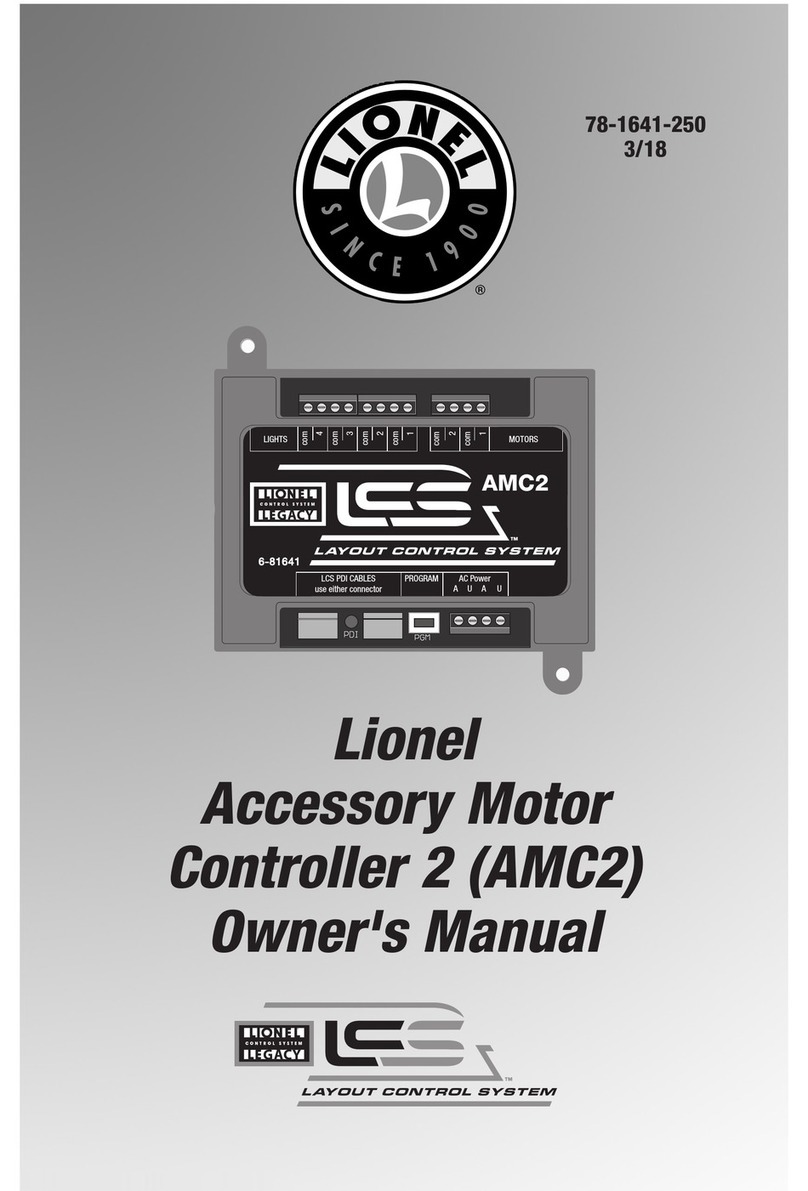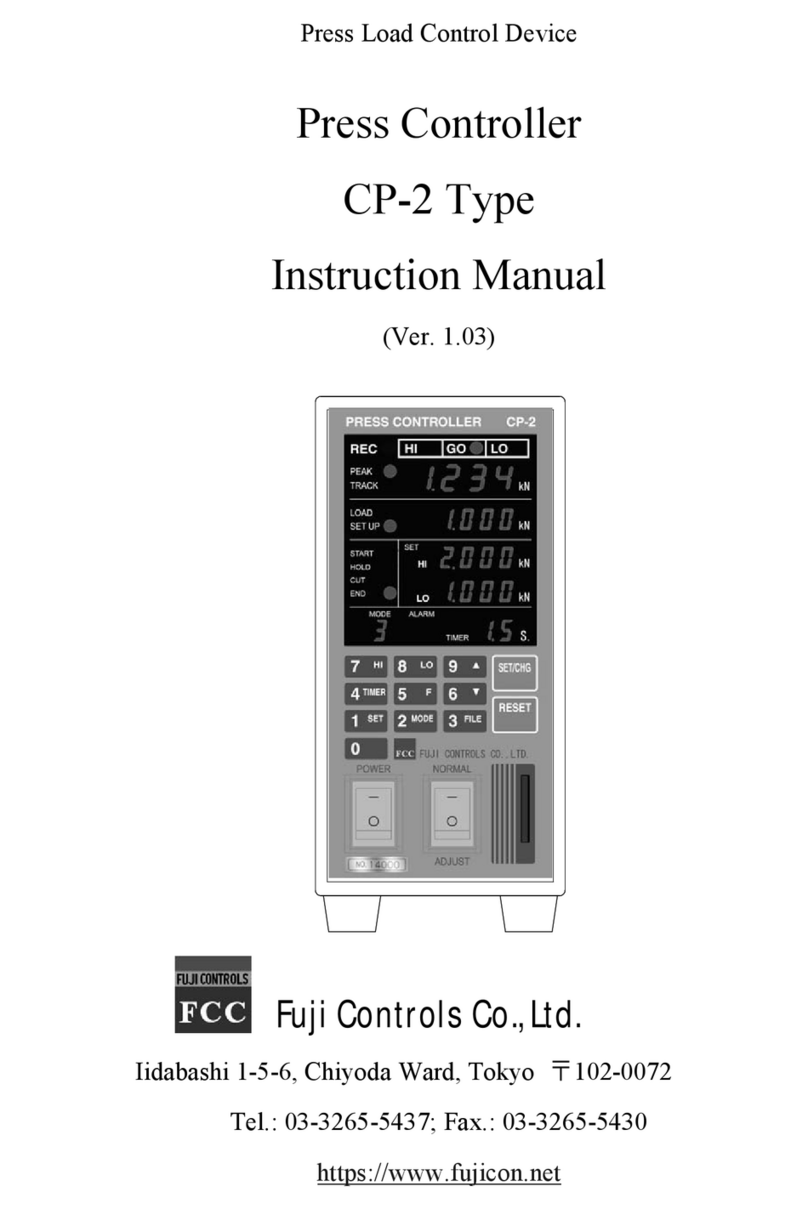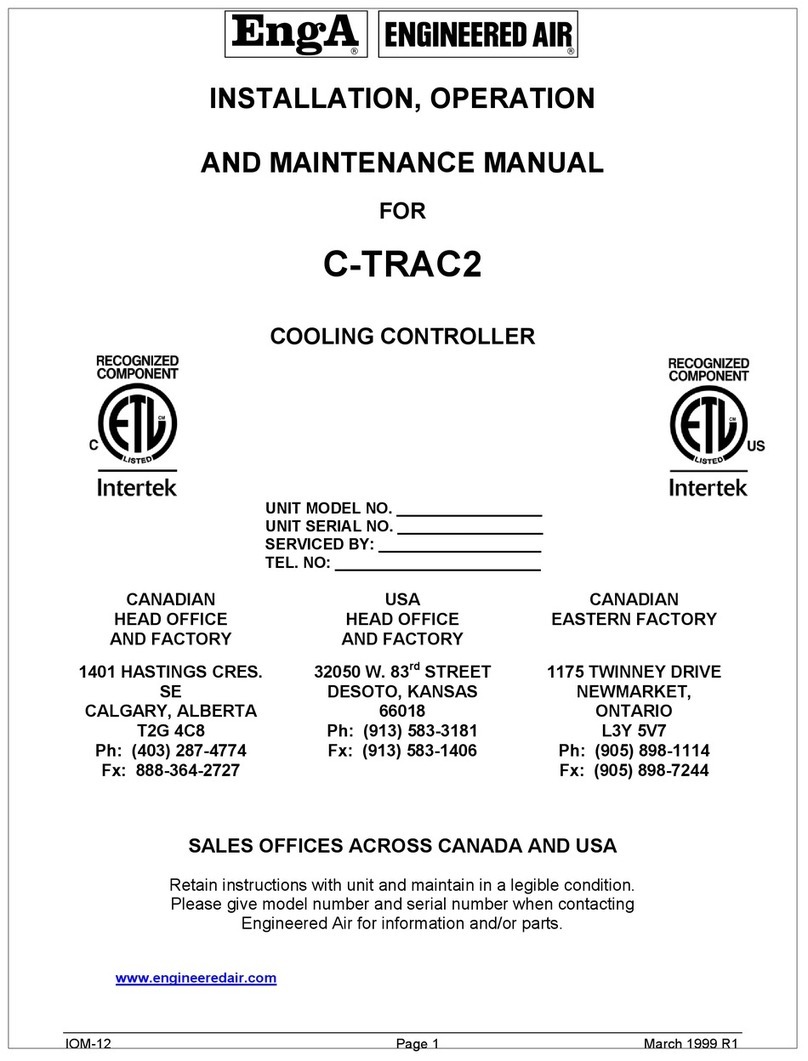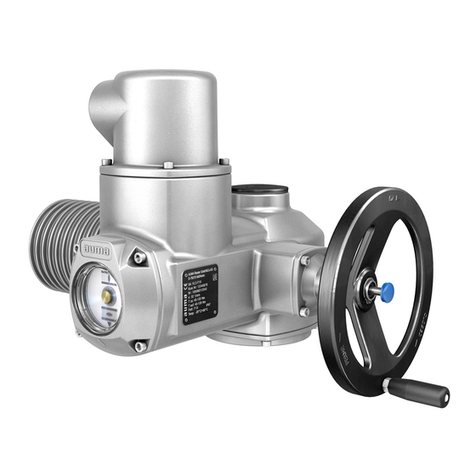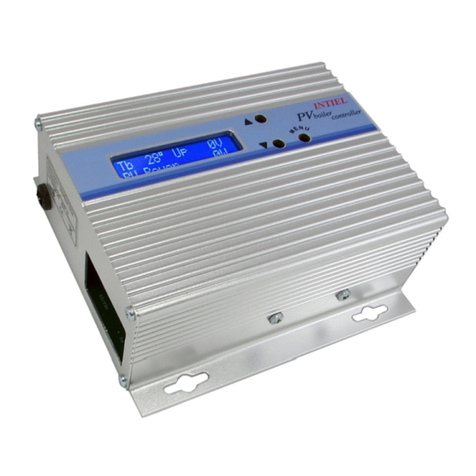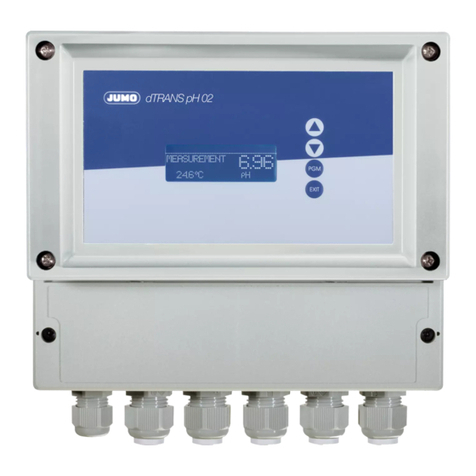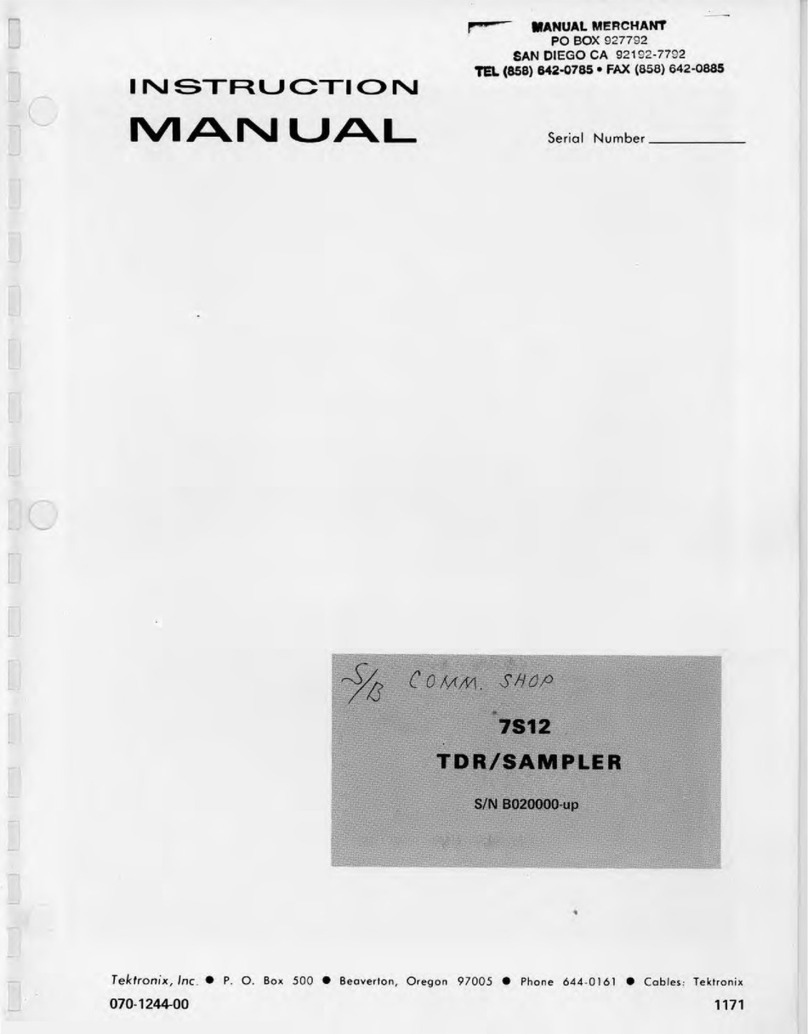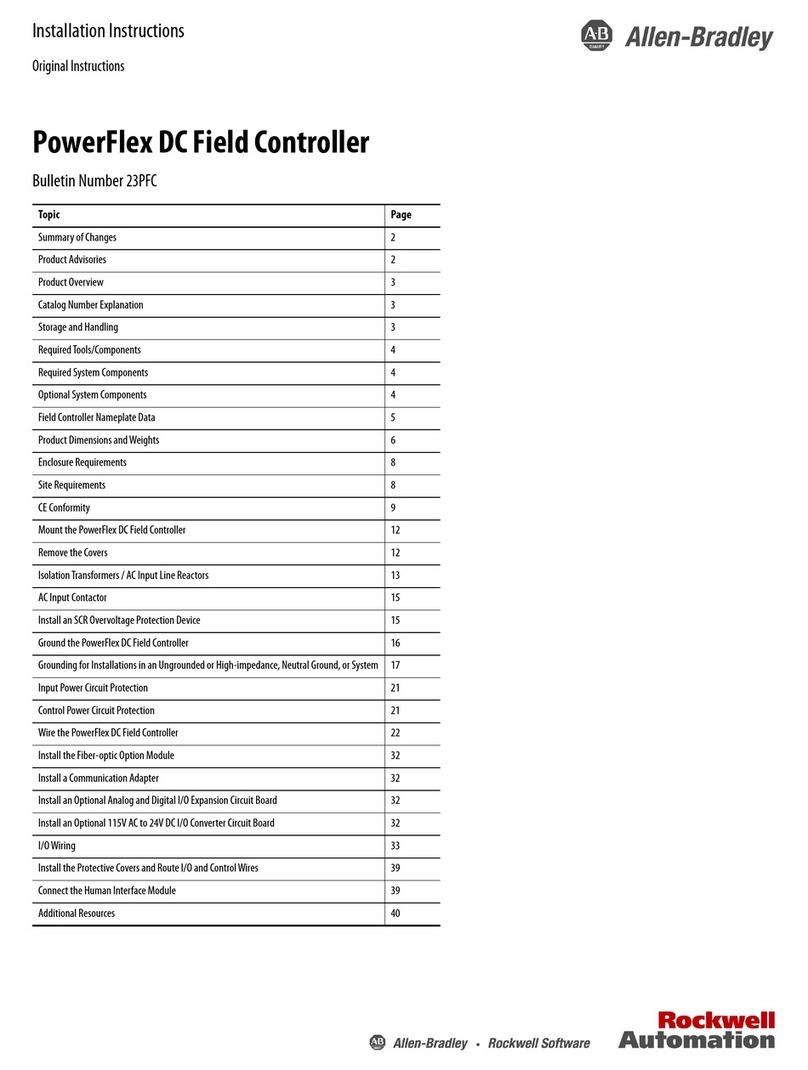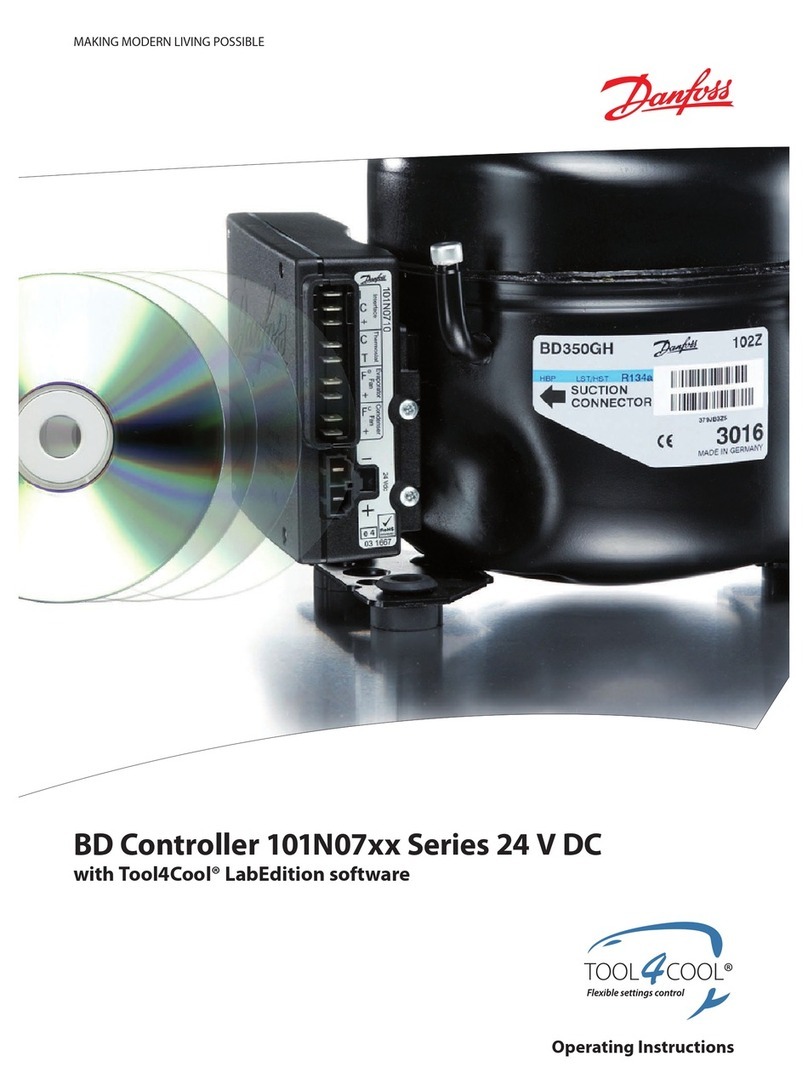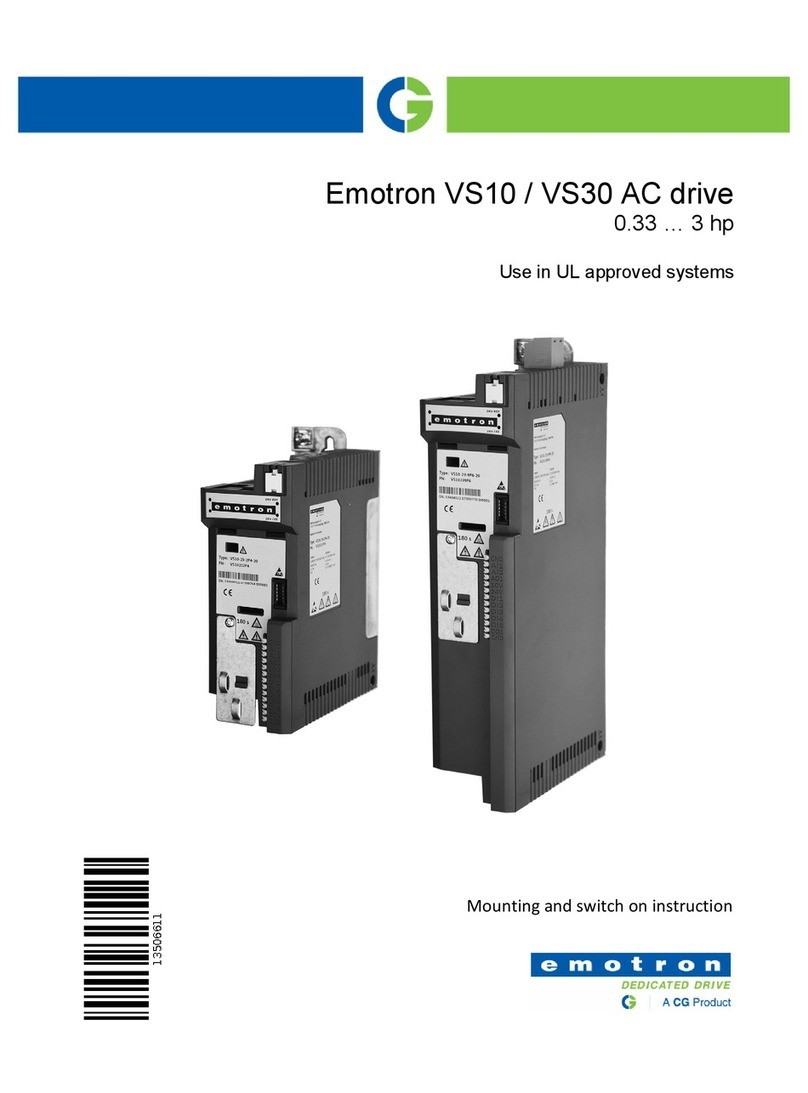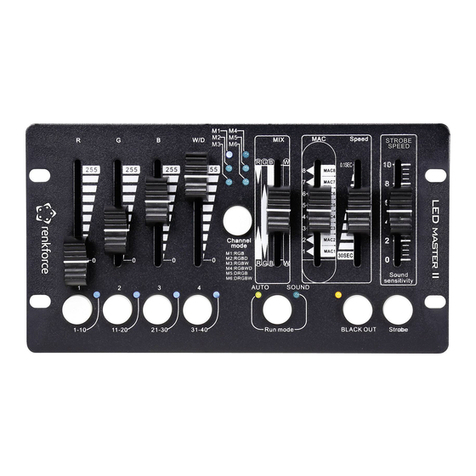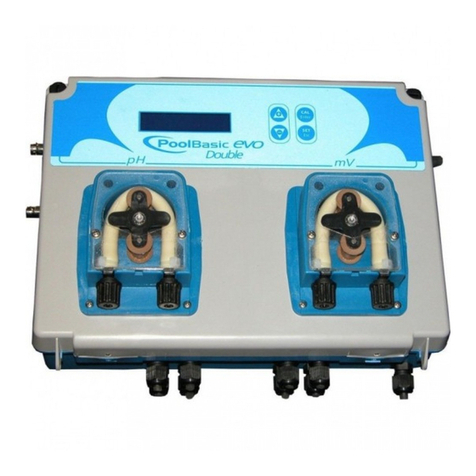BlueSun 10 A User manual

MPPT Solar Controller
Characteristics
MPPT series controller is suitable for the street light
system. The controller features a smart tracking algorithm
inside that maximizes the energy from the solar PV
module(s) and charge the battery. At the same time, the
low voltage disconnect function (LVD) will prevent the
battery from over discharging.
The controller charging process has been optimized for
long battery life and improved system performance. The
comprehensive self-diagnostics and electronic protection
functions can prevent damage from installation mistakes
or system faults.
Peak conversion efficiency of 97 %, high Tracking
efficiency of 99%.
Very fast sweeping of the entire I-V curve, several
seconds tracking speed.
Widely used, automatic recognize day/night.
Timer function with 1-15 hours option for street light.
Unique dual timer function, enhance the flexibility of
street light system.
Sealed, Gel and Flooded battery option.
Adopting temperature compensation and correcting the
charging and discharging parameters automatically,
improving the battery lifetime.
Electronic protection: over charging, over discharging,
overload, short circuit.
Reverse protection: any combination of solar module
and battery, without causing damage to any component.
RJ45 interface with remote meter MT-5, convenient to
check operating parameters of controllers. ( MT-5 is
optional)
1
PLURIGÁS SOLAR ENERGIAS Lda. - End: Urb. António Aleixo -1 , 4820-358 Fafe, Portugal

1. Technical Specifications
Model
10 A 20 A 30 A 45 A
Rated Battery Current 10 A 20 A 30 A 45 A
Nominal System Voltage 12V / 24V Auto Work
Max. Solar Input Voltage 100 V 150 V
Maximum Battery Voltage 32 V
Low voltage disconnect 11,1V / 22,2V
Under voltage warning 12,0V / 24,0V
Under voltage recover 12,2V / 24,4V
Low voltage reconnect 12,6V / 25,2 V
Boost return voltage 13,2V / 26,4 V
Float voltage 13,8V / 27,6V
Boost voltage 14,2V / 28,4V
Over Voltage Reconnect 15,0V / 30,0 V
Charging limit voltage 15,5V / 31,0 V
High Volt Disconnect 16,0V / 32,0 V
Self-consumption ≤ 30 mA
Discharge Circuit Voltage Drop ≤ 170 mV
Charging Mode Modo MPPT
Temperature Compensation
Coefficient -30mV/℃/12V(25℃)
NTTV (Night Time Threshold Voltage) 5V / 10V
DTTV (Day Time Threshold Voltage) 6V / 12V
Terminal < 4 mm² < 10 mm² < 25 mm² < 25 mm²
Ambient temperature range -35ºC ~ +55ºC
Humidity range 10%-90%(NC)
Communication TTL232 / 8 pin RJ45
Dimension (mm) 156x97x68 169x118x83 242x169x91 242x169x91
Mounting holes (mm) 147x60 160x80 180x160 180x160
Weight (g) 550 950 2000 2050
Price -
2
PLURIGÁS SOLAR ENERGIAS Lda. - End: Urb. António Aleixo -1 , 4820-358 Fafe, Portugal

1. Technical Specifications
1
– Temperature Sensor Measure ambient temperature and make temperature compensation for charging and
discharging.
2
– Charging Status LED Indicator An LED indicator that shows charging status and overvoltage of battery.
3
– Battery Status LED Indicator An LED indicator that shows battery status or system errors.
4
– Setting Indicator Corresponding indicator will be on when set timer1, timer2 and battery type.
5
– LED Digital Display Display the load work mode and status.
6
– Setting Button (in manual mode used for load ON/OFF) Set load work mode and select battery type.
7
– Solar Module Terminals Connect solar modules.
8
– Battery Terminals Connect batteries.
9
– Load Terminals Connect loads.
10
– RJ45 Communication Interface Communicate with remote meter MT-5.
3
PLURIGÁS SOLAR ENERGIAS Lda. - End: Urb. António Aleixo -1 , 4820-358 Fafe, Portugal

2.
Installation Instructions
Read through the entire installation section first before
beginning installation.
Be very careful when working with batteries. Wear eye
protection. Have fresh water available to wash and clean
any contact with battery acid.
Uses insulated tools and avoid placing metal objects near
the batteries.
Explosive battery gasses may be present during charging.
Be certain there is sufficient ventilation to release the
gasses.
Avoid direct sunlight and do not install in locations where
water can enter the controller.
Loose power connections and/or corroded wires may
result in resistive connections that melt wire insulation,
burn surrounding materials, or even cause fire.
Ensure
tight connections and use cable clamps to secure cables and prevent them from swaying in mobile
applications.
Use with Gel, Sealed or Flooded batteries only.
Battery connection may be wired to one battery or a bank of batteries. The following instructions refer to a
singular battery, but it is implied that the battery connection can be made to either one battery or a group
of batteries in a battery bank. Select the system cables according to 3A/mm2 current density.
2.1. MOUNTING
Step 1: Choose Mounting Location
Locate The Controller on a vertical surface protected from direct sun, high temperature, and water.
Step 2: Check for Clearance
Place The Controller in the location where it will be mounted. Verify that there is sufficient room to run
wires and that there is sufficient room above and below the controller for air flow.
Step 3: Mark Holes
Use a pencil or pen to mark the four (4) mounting hole locations on the mounting surface.
Step 4: Drill Holes
Remove the controller and drill four sizeable holes in the marked locations.
Step 5: Secure Controller
Place the controller on the surface and align the mounting holes with the drilled holes in step 4. Secure the
controller in place using the mounting screws.
4
PLURIGÁS SOLAR ENERGIAS Lda. - End: Urb. António Aleixo -1 , 4820-358 Fafe, Portugal

2.
Installation Instructions
2.2. WIRING
NOTE: A recommended connection order has been provided for maximum safety during installation. The
Controller is a negative ground controller. Any negative connection of solar module, battery or load can be earth
grounded as required. Grounding is recommended.
CAUTION: Don’t connect the loads with surge power exceeding the ratings of the controller.
For mobile
applications, be sure to secure all wiring. Use cable clamps to prevent cables from swaying when the vehicle is
in motion. Unsecured cables create loose and resistive connections which may lead to excessive heating and/or
fire.
Step 1: Battery Wiring
WARNING: Risk of explosion or fire! Never short circuit battery positive (+) and negative (-) or cables
Before connecting the battery, measure the battery voltage. It must be over 9V to power the controller.
For 24V, the voltage must be greater than 18V to properly detect a 24V battery. The 12/24V battery
detection is automatic and the check is only performed at start-up.
Wire an in-
line fuse holder no more than 150mm from the battery positive terminal. Do not insert a fuse at
this time. Confirm the connection correct and then turn on the power.
Step 2: Load Wiring
The Controller load output can connect DC electronic devices of which rated voltage is same as battery’s.
Controller will provide battery voltage to the loads. See Section 4.4 Setting Operation for more details
about the load control.
Connect load positive (+) and negative (-) to the Controller load output as shown in figure 3-3. The load
terminals may exist voltage, connect carefully to avoid short circuit. An in-line fuse holder should be wired
in series in the load positive (+) or negative (-) wire as shown. Do not insert a fuse at this time. Confirm the
connection correct and then turn on the power. If wiring the load connection to a load distribution panel,
each load circuit should be fused separately. The total load draw should not exceed the 10A load rating.
Step 3
:Solar Module Wiring
WARNING: Risk of electric shock! Exercise caution when handling solar wiring. The solar module(s) high
voltage output can cause severe shock or injury. Cover the solar module(s) from the sun before installing
solar wiring.
The Controller can accept 12V, 24V nominal off-grid solar module arrays. Grid –tie solar module(s) may be
used if the open circuit voltage does not exceed the maximum solar input rating. The solar module(s)
nominal voltage must be equal to or greater than the nominal battery voltage.
Step 4: Accessories (option)
Install Remote Meter (purchased separately) if required. Refer to the instructions provided for detailed
installation procedures.
Step 5: Confirm Wiring
Double-check the wiring in step1 through 4. Confirm correct polarity at each connection. Verify that all six
power terminals are tightened.
Step 6: Confirm Power
-up
When battery power is applied and The Controller powers up, the battery led indicator will be green. If
Controller does not power up or battery status LEDs error exists, refer to Section 5 Troubleshooting
5
PLURIGÁS SOLAR ENERGIAS Lda. - End: Urb. António Aleixo -1 , 4820-358 Fafe, Portugal

3.
Operation
3.1. MPPT Technology
3.1.1.
MPPT
The Controller utilizes Maximum Power Point Tracking technology to extract maximum power from the solar
module (s). The tracking algorithm is fully automatic and does not require user adjustment, Controller
technology will track the array maximum power point voltage (
Vmp) as it varies with weather conditions,
ensuring that maximum power is harvested from the array through the course of the day.
Current Boost
In many cases, Controller MPPT technology will ―boost‖ the solar charge current. For example, a system may
have 8 Amps of solar current flowing into The Controller and 10 Amps of charge current flowing out to the
battery. The Controller does not create current! Rest assured that the power into The Controller is the same as
the power out of the Tracer. Since power is the product of voltage and current (Volts
× Amps), the following is
true*:
(1) Power Into The Controller=Power Out of the Tracer
(2) Volts In × Amps In=Volts Out × Amps Out
Assuming 100% efficiency. Actually, the losses in wiring and conversion exist.
If the solar module’s
Vmp is greater than the battery voltage, it follows that the battery current must be
proportionally greater than the solar input current so that input and output power are balanced. The greater
the difference between the maximum power voltage and battery voltage, the greater the current boost. Current
boost can be substantial in systems where the solar array is of a higher nominal voltage than the battery.
An Advantage Over Traditional Controllers
Traditional controllers connect the solar module directly to the battery when recharging. This requires that the
solar module operate in a voltage range that is below the module’s
Vmp. In a 12V system for example, the
battery voltage may range from 11
-15Vdc but the module’s Vmp is typically around 16 or 17V.
6
PLURIGÁS SOLAR ENERGIAS Lda. - End: Urb. António Aleixo -1 , 4820-358 Fafe, Portugal

3.
Operation
3.1.2 Battery Charging Information
The Controller has a 4
-stage battery charging algorithm for rapid, efficient, and safe battery charging.
Bulk Charge
In this stage, the battery voltage has not yet reached boost
voltage and 100% of available solar power is used to
recharge the battery.
Boost Charge
When the battery has recharged to the Boost voltage
set point, constant
-voltage regulation is used to prevent
heating and excessive battery gassing. The Boost stage remains 120 minutes and then goes to Float Charge.
Every time when the controller is powered on, if it detects neither over discharged nor overvoltage, the
charging will enter into boost charging stage.
Float Charge
After the Boost voltage stage, Controller will reduce the battery voltage to Float voltage set point. When the
battery is fully recharged, there will be no more chemical reactions and all the charge current transmits into
heat and gas at this time. Then The Controller reduces the voltage to the floating stage, charging with a smaller
voltage and current. It will reduce the temperature of battery and prevent the gassing, also charging the battery
slightly at the same time. The purpose of Float stage is to offset the power consumption caused by self
consumption and small loads in the whole system, while maintaining full battery storage capacity.
In Float stage, loads can continue to draw power from the battery. In the event that the system load(s) exceed
the solar charge current, the controller will no longer be able to maintain the battery at the Float set point.
Should the battery voltage remains below the boost reconnect charging voltage, the controller will exit Float
stage and return to Bulk charging.
Equalize
WARNING: Risk of explosion! Equalizing flooded battery can produce explosive gases, so well ventilation of
battery box is necessary.
NOTE: Equipment damage! Equalization may increase battery voltage to the level damaging to sensitive DC
loads. Ensure that all load allowable input voltages are greater than the equalizing charging set point voltage.
Over
-charging and excessive gas precipitation may damage the battery plates and activate material shedding on
them. Too high an equalizing charge or for too long may cause damage. Please carefully review the specific
requirements of the battery used in the system.
Certain types of batteries benefit from periodic equalizing charge, which can stir the electrolyte, balance battery
voltage and complete chemical reaction. Equalizing charge increases the battery voltage, higher than the
standard complement voltage, which gasifies the battery electrolyte. If it detects that the battery is being over
discharged, the solar controller will automatically turn the battery to equalization charging stage, and the
equalization charging will be 120mins. Equalizing charge and boost charge are not carried out constantly in a full
charge process to avoid too much gas precipitation or overheating of battery.
7
PLURIGÁS SOLAR ENERGIAS Lda. - End: Urb. António Aleixo -1 , 4820-358 Fafe, Portugal

3.
Operation
3.2. LED Indications
GREEN ON: charging
GREEN BLINK: Battery over-voltage
RED: LED digital tube displays ”P” =>‖PV Overvoltage
RED: LED digital tube displays ”CP” =>‖PV Overcurrent
GREEN ON when battery voltage in normal range
GREEN FLASHING when battery full
ORANGE ON when battery under voltage
RED ON when battery over discharged Please refer to Chapter 5 for troubleshooting.
Setting Operation
The default night length is 10 hours. The controller can learn
the night length referring to the previous night so as to adapt
to the different seasons. However, it will take some time to
learn it.
Notes: when the “OFF” time set at timer 2 is later than local sunrise time, the controller will turn off the load
output at the sunrise time, which shows light control first!
.
3.2.1
Dusk to Dawn (Light ON + Light OFF)
When solar module voltage goes below the point of NTTV (Night Time Threshold Voltage) at sunset, the solar
controller will recognize the starting voltage and turn on the load after 10 minutes delay; When solar module
voltage goes above point of DTTV (Day Time Threshold Voltage), the solar controller will recognize the starting
voltage and turn off the load after 10 minutes delay.
3.2.2. Light ON + Timer (1
-15h on)
When solar module voltage goes below the point of NTTV (Night Time Threshold Voltage) at sunset; the solar
controller will recognize the starting voltage and turn on the load after 10 minutes delay for several hours
3.2.3. Test Mode
It is used to test the system and the same as Dusk to Dawn. But there is no 10 minutes delay when controller
recognizes the starting voltage. When below the starting voltage, the controller will turn on the load, if higher,
it will turn off load. The test mode makes it easy to check the system installation.
3.
2.4. Manual Mode
This mode is to turn on/off the load by Setting Switch. Press the setting button once and setting indicators will
be changed once among timer 1, timer2 and battery type. When timer 1 setting indicator is on, press the
setting button for more than 5 seconds till the LED digital tube flashes. Then press the setting button till the
desired number appears according to the following table. The setting is finished when the digital tube stop
flashing. Timer 2 setting is the same as timer 1 when the setting indicator is on timer2.
8
PLURIGÁS SOLAR ENERGIAS Lda. - End: Urb. António Aleixo -1 , 4820-358 Fafe, Portugal

3.
Operation
LED Nº
TIMER 1
0 Dusk to Dawn, Load will be on all night
1Load will be on for 1h after 10 min delay since sunset.
2Load will be on for 2h after 10 min delay since sunset.
3Load will be on for 3h after 10 min delay since sunset.
4Load will be on for 4h after 10 min delay since sunset.
5Load will be on for 5h after 10 min delay since sunset
6Load will be on for 6h after 10 min delay since sunset
7Load will be on for 7h after 10 min delay since sunset
8Load will be on for 8h after 10 min delay since sunset
9Load will be on for 9h after 10 min delay since sunset
0. Load will be on for 10h after 10 min delay since sunset
1. Load will be on for 11h after 10 min delay since sunset
2. Load will be on for 12h after 10 min delay since sunset
3. Load will be on for 13h after 10 min delay since sunset
4. Load will be on for 14h after 10 min delay since sunset
5. Load will be on for 15h after 10 min delay since sunset
6. Test Mode
7. ON/OFF Mode
LED Nº
TIMER 2
0 Sem atraso, a carga é ligada após anoitecer
1Load will be on for 1 hour before sunrise
2Load will be on for 2 hour before sunrise
3Load will be on for 3 hour before sunrise
4Load will be on for 4 hour before sunrise
5Load will be on for 5 hour before sunrise
6Load will be on for 6 hour before sunrise
7Load will be on for 7 hour before sunrise
8Load will be on for 8 hour before sunrise
9Load will be on for 9 hour before sunrise
10 Load will be on for 10 hour before sunrise
11 Load will be on for 11 hour before sunrise
12 Load will be on for 12 hour before sunrise
13 Load will be on for 13 hour before sunrise
14 Load will be on for 14 hour before sunrise
15 Load will be on for 15 hour before sunrise
LED Nº
BATTERY TYPE
1 Seal lead acid battery
2 Flooded battery
3 Gel battery
9
PLURIGÁS SOLAR ENERGIAS Lda. - End: Urb. António Aleixo -1 , 4820-358 Fafe, Portugal

4. TROUBLESHOOTING / MAINTENANCE
Indicador
Razões
Possivéis
Troubleshooting
Charging LED indicator off during
daytime when sunshine falls on PV
modules properly.
PV array disconnection Check that PV and battery wire connections are
correct and tight.
Green charging LED indicator
flashing
Battery voltage higher than over voltage
disconnect voltage(OVD)
Check if battery voltage over high. Disconnect the
solar module
Battery LED indicator are orange Battery under voltage Load output is normal,, charging LED indicator
will return to green automatically when fully
charged.
Battery LED indicator RED color Battery over discharged The controller cut off the output automatically,
LED indicator will return to green automatically
when fully charged.
LED digital tube displays ―P‖ PV Overvoltage Check whether the PV parameters match with
the controller’s; It will be reconnected
automatically until the voltage falls safely below
the maximum rating.
LED digital tube displays ―C‖ PV Overcurrent Check whether the PV parameters match with
the controller’s, please according to the
controller parameters for photovoltaic
parameters selection.
Battery Indicator red flashing Over load or short circuit Overload: Please reduce the load and press the
button once, the controller will resume to work
after 3s;
Short circuit: when the first short-circuit occurs,
the controller will automatically resume to work
after 10s; when a second short-circuit occurs,
press the button, the controller will resume to
work after 3s.
Maintenance
The following inspections and maintenance tasks are recommended at least two times per year for best
controller performance.
Check that the controller is securely mounted in a clean and dry environment.
Check that the air flow and ventilation around the controller is not blocked. Clear all dirt or fragments on the
heat sink.
Check all the naked wires to make sure insulation is not damaged for serious solarization , frictional wear,
dryness, insects or rats etc. Maintain or replace the wires if necessary.
Tighten all the terminals. Inspect for loose, broken, or burnt wire connections.
Check and confirm that LED digital tube is consistent with required. Pay attention to any troubleshooting or
error indication .Take necessary corrective action. Confirm that all the system components are ground
connected tightly and correctly.
Confirm that all the terminals have no corrosion, insulation damaged, high temperature or burnt/discolored
sign, tighten terminal screws to the suggested torque.
Inspect for dirt, insects and corrosion, and clear up.
Check and confirm that lightning arrester is in good condition. Replace a new one in time to avoid damaging
of the controller and even other equipments.
10
PLURIGÁS SOLAR ENERGIAS Lda. - End: Urb. António Aleixo -1 , 4820-358 Fafe, Portugal
This manual suits for next models
3
Table of contents

